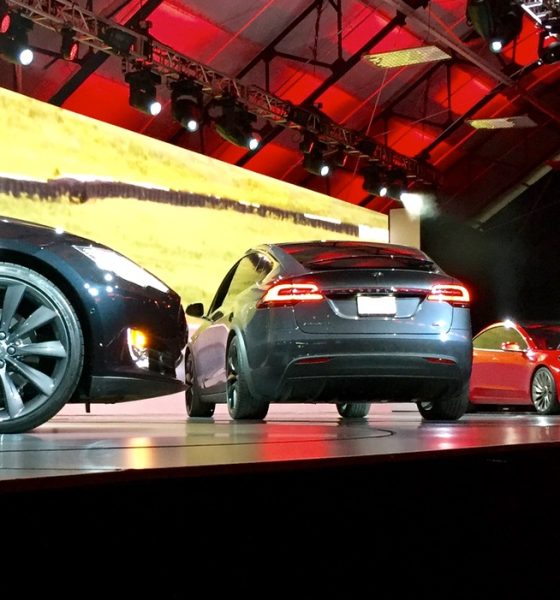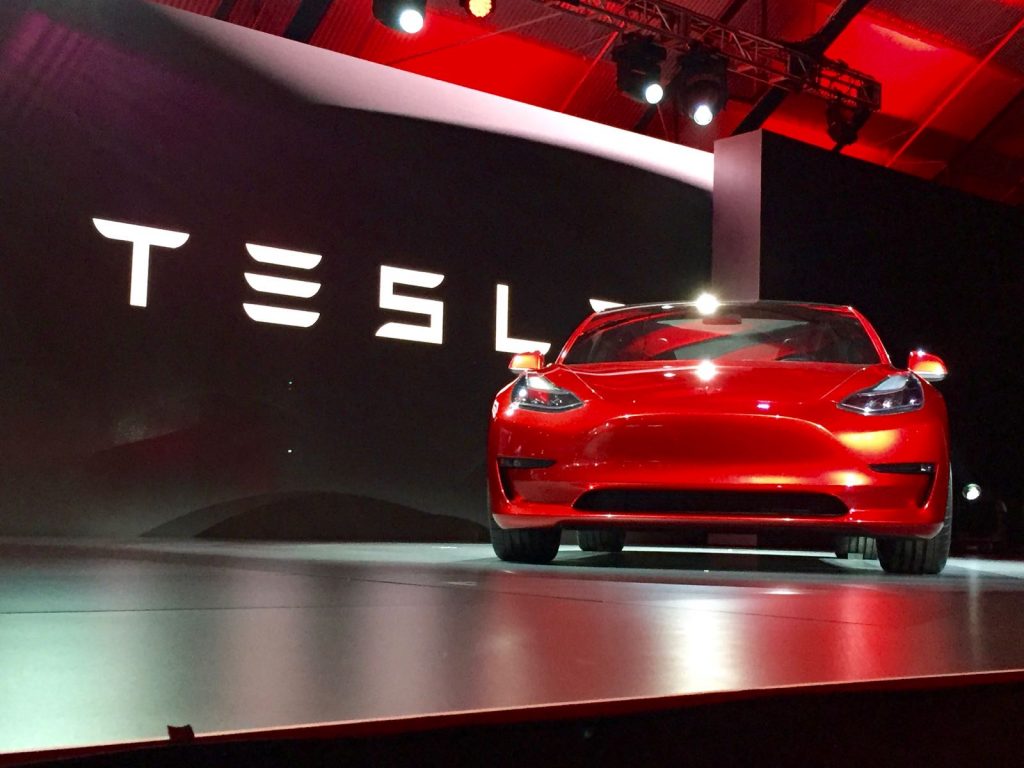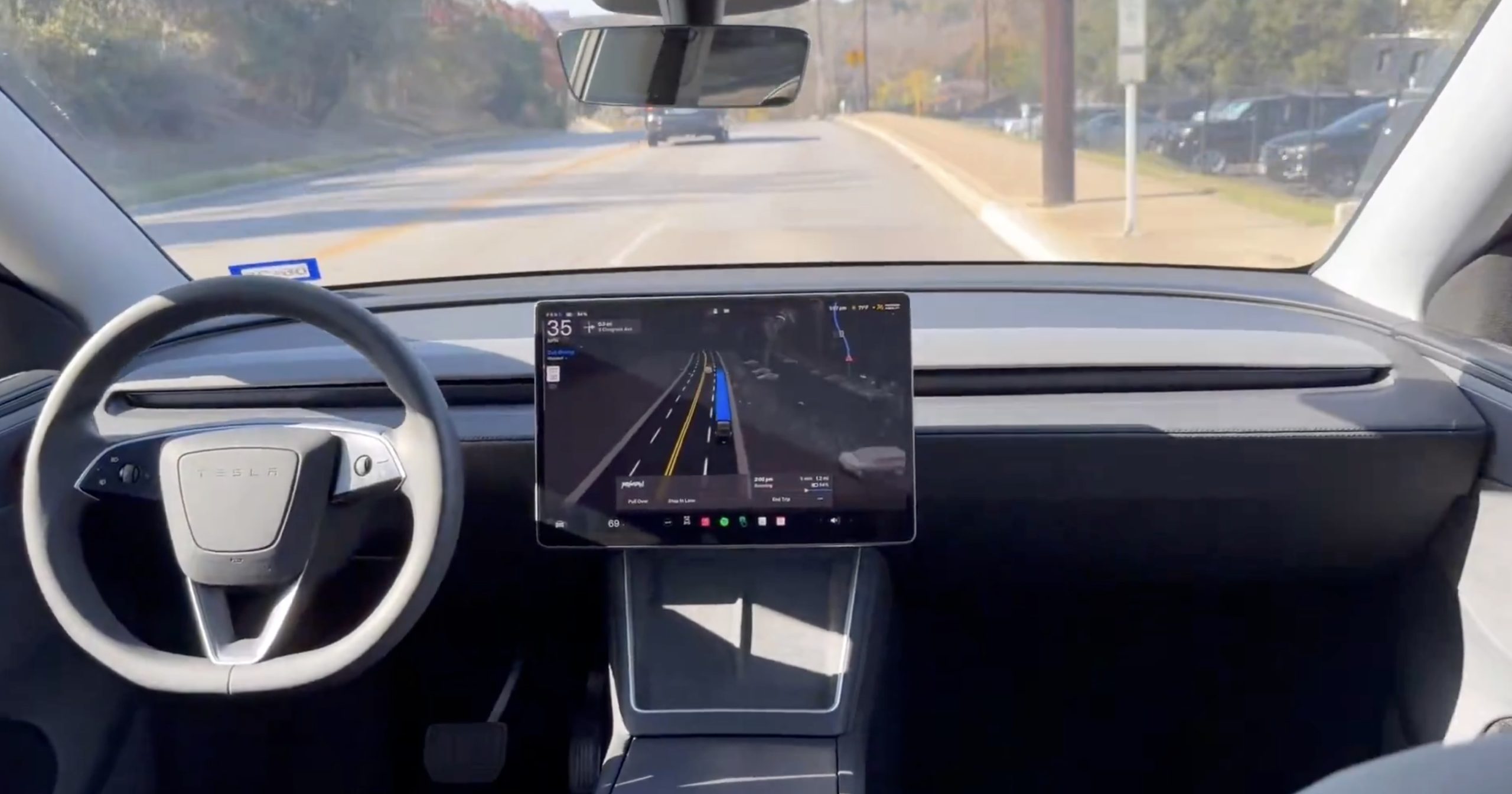

News
Tesla won’t slow despite Edmunds claim that loss of tax credit will “kill the U.S. EV market”
Edmunds has released a new study that claims the loss of federal tax credits for EV buyers is “likely to kill the U.S. EV market.” It goes on to say, “Without these credits, this market is likely to crash.” Edmunds bases its analysis on what happened when the state of Georgia repealed its EV incentive program in the middle of 2015. Not only did Georgia eliminate its EV incentive, it also imposed new fees on EV drivers designed to offset the loss of revenue the state experienced because cars with electric motors use less gasoline.
Up until then, Georgia gave every qualifying EV buyer a $5,000 credit — the largest in the nation. That was on top of the $7,500 federal tax credit and made buying an EV in Georgia a very attractive proposition. The biggest beneficiary was the Nissan LEAF. In June, 2015 — the last month the incentive was available — 1,008 of them were sold or leased. In July, after the rebate was no longer available, 66 cars were delivered.
Cars eligible for the state incentive accounted for up to 17% of the new car market in Georgia. Following the legislature’s decision to eliminate the credit, they have fallen to about 2% of sales. Note that is still higher than the percentage of EV sales in the US as a whole.
Should Tesla be concerned? Not really says the Motley Fool. Data compiled by IHS Markit and included in the Edmunds analysis shows a drop in sales of the Model S shortly after Georgia repealed its rebate but sales quickly recovered and have since gone on to set new records for the company in the Peachtree State.
The federal tax credit was originally a pump priming exercise intended to help EV manufacturers get started. The assumption Congress made when it first enacted the credit was that once a company had sold 200,000 cars with plugs, economies of scale would begin to kick in, making it possible to build and sell electrified cars profitably without government assistance.
Tesla is getting close to that figure and will surely pass it once the Model 3 gets into production this summer. After that, the federal tax credit for Tesla vehicles will begin to phase out. In addition, many people worry the Trump administration will kill the federal EV tax credit entirely. According to Edmunds, that means Tesla could suffer a dramatic decline in sales — at least in the US. Here’s why that won’t happen according to the Motley Fool.
Not so fast
First, any comparison between a 2015 Nissan LEAF and a 2018 Tesla Model 3 is a lopsided contest. The LEAF is a fine car but it suffers from a serious lack of range. Nor does it have any of the industry leading technology Tesla offers its customers. It relies on the CHAdeMO charging standard, which is rapidly losing ground to the CCS standard and the Tesla Supercharger network.

Red Tesla Model 3 at the vehicle unveiling event on March 31, 2016 from the company’s Hawthorne, CA Design Center.
Second, the base price of the Model 3 is $35,000, which happens to be very near the average selling price of a new passenger vehicle in the US market today. With or without incentives, the Model 3 will be highly competitive. With nearly 400,000 reservations worldwide, demand for the Model 3 is clearly not dependent on government financial incentives.
The real issue here is that electric car sales have not advanced as quickly as electric car advocates predicted. Range anxiety, lack of charging infrastructure, and fear of the unknown have kept many people from buying an electric car, whether from Tesla or any other manufacturer. The “tipping point” when electric cars become the first choice of mainstream car buyers is tantalizingly close but still not here yet.
Reasonable people may disagree about the best way to promote electric cars. Paying people to buy them may not be as beneficial to society as subsidizing the infrastructure needed to charge them. The interstate highway system was a hugely expensive undertaking but it unleashed an unprecedented surge in US economic output. Today it is still the backbone of commerce in America. Putting the money used to fund the federal EV tax credit to work building the nation’s charging infrastructure could be a more efficient use of resources.
By any analysis, the Tesla phenomenon is not dependent on government incentives. It is based on building compelling electric automobiles that outperform the competition. Elon Musk deliberately chose to start at the top of the market to attract those who influence public opinion. That strategy is working and will continue to work even if the federal tax credit is eliminated entirely.

Elon Musk
Elon Musk and Tesla AI Director share insights after empty driver seat Robotaxi rides
The executives’ unoccupied tests hint at the rapid progress of Tesla’s unsupervised Robotaxi efforts.

Tesla CEO Elon Musk and AI Director Ashok Elluswamy celebrated Christmas Eve by sharing personal experiences with Robotaxi vehicles that had no safety monitor or occupant in the driver’s seat. Musk described the system’s “perfect driving” around Austin, while Elluswamy posted video from the back seat, calling it “an amazing experience.”
The executives’ unoccupied tests hint at the rapid progress of Tesla’s unsupervised Robotaxi efforts.
Elon and Ashok’s firsthand Robotaxi insights
Prior to Musk and the Tesla AI Director’s posts, sightings of unmanned Teslas navigating public roads were widely shared on social media. One such vehicle was spotted in Austin, Texas, which Elon Musk acknowleged by stating that “Testing is underway with no occupants in the car.”
Based on his Christmas Eve post, Musk seemed to have tested an unmanned Tesla himself. “A Tesla with no safety monitor in the car and me sitting in the passenger seat took me all around Austin on Sunday with perfect driving,” Musk wrote in his post.
Elluswamy responded with a 2-minute video showing himself in the rear of an unmanned Tesla. The video featured the vehicle’s empty front seats, as well as its smooth handling through real-world traffic. He captioned his video with the words, “It’s an amazing experience!”
Towards Unsupervised operations
During an xAI Hackathon earlier this month, Elon Musk mentioned that Tesla owed be removing Safety Monitors from its Robotaxis in Austin in just three weeks. “Unsupervised is pretty much solved at this point. So there will be Tesla Robotaxis operating in Austin with no one in them. Not even anyone in the passenger seat in about three weeks,” he said. Musk echoed similar estimates at the 2025 Annual Shareholder Meeting and the Q3 2025 earnings call.
Considering the insights that were posted Musk and Elluswamy, it does appear that Tesla is working hard towards operating its Robotaxis with no safety monitors. This is quite impressive considering that the service was launched just earlier this year.
Elon Musk
Starlink passes 9 million active customers just weeks after hitting 8 million
The milestone highlights the accelerating growth of Starlink, which has now been adding over 20,000 new users per day.

SpaceX’s Starlink satellite internet service has continued its rapid global expansion, surpassing 9 million active customers just weeks after crossing the 8 million mark.
The milestone highlights the accelerating growth of Starlink, which has now been adding over 20,000 new users per day.
9 million customers
In a post on X, SpaceX stated that Starlink now serves over 9 million active users across 155 countries, territories, and markets. The company reached 8 million customers in early November, meaning it added roughly 1 million subscribers in under seven weeks, or about 21,275 new users on average per day.
“Starlink is connecting more than 9M active customers with high-speed internet across 155 countries, territories, and many other markets,” Starlink wrote in a post on its official X account. SpaceX President Gwynne Shotwell also celebrated the milestone on X. “A huge thank you to all of our customers and congrats to the Starlink team for such an incredible product,” she wrote.
That growth rate reflects both rising demand for broadband in underserved regions and Starlink’s expanding satellite constellation, which now includes more than 9,000 low-Earth-orbit satellites designed to deliver high-speed, low-latency internet worldwide.
Starlink’s momentum
Starlink’s momentum has been building up. SpaceX reported 4.6 million Starlink customers in December 2024, followed by 7 million by August 2025, and 8 million customers in November. Independent data also suggests Starlink usage is rising sharply, with Cloudflare reporting that global web traffic from Starlink users more than doubled in 2025, as noted in an Insider report.
Starlink’s momentum is increasingly tied to SpaceX’s broader financial outlook. Elon Musk has said the satellite network is “by far” the company’s largest revenue driver, and reports suggest SpaceX may be positioning itself for an initial public offering as soon as next year, with valuations estimated as high as $1.5 trillion. Musk has also suggested in the past that Starlink could have its own IPO in the future.
News
NVIDIA Director of Robotics: Tesla FSD v14 is the first AI to pass the “Physical Turing Test”
After testing FSD v14, Fan stated that his experience with FSD felt magical at first, but it soon started to feel like a routine.

NVIDIA Director of Robotics Jim Fan has praised Tesla’s Full Self-Driving (Supervised) v14 as the first AI to pass what he described as a “Physical Turing Test.”
After testing FSD v14, Fan stated that his experience with FSD felt magical at first, but it soon started to feel like a routine. And just like smartphones today, removing it now would “actively hurt.”
Jim Fan’s hands-on FSD v14 impressions
Fan, a leading researcher in embodied AI who is currently solving Physical AI at NVIDIA and spearheading the company’s Project GR00T initiative, noted that he actually was late to the Tesla game. He was, however, one of the first to try out FSD v14.
“I was very late to own a Tesla but among the earliest to try out FSD v14. It’s perhaps the first time I experience an AI that passes the Physical Turing Test: after a long day at work, you press a button, lay back, and couldn’t tell if a neural net or a human drove you home,” Fan wrote in a post on X.
Fan added: “Despite knowing exactly how robot learning works, I still find it magical watching the steering wheel turn by itself. First it feels surreal, next it becomes routine. Then, like the smartphone, taking it away actively hurts. This is how humanity gets rewired and glued to god-like technologies.”
The Physical Turing Test
The original Turing Test was conceived by Alan Turing in 1950, and it was aimed at determining if a machine could exhibit behavior that is equivalent to or indistinguishable from a human. By focusing on text-based conversations, the original Turing Test set a high bar for natural language processing and machine learning.
This test has been passed by today’s large language models. However, the capability to converse in a humanlike manner is a completely different challenge from performing real-world problem-solving or physical interactions. Thus, Fan introduced the Physical Turing Test, which challenges AI systems to demonstrate intelligence through physical actions.
Based on Fan’s comments, Tesla has demonstrated these intelligent physical actions with FSD v14. Elon Musk agreed with the NVIDIA executive, stating in a post on X that with FSD v14, “you can sense the sentience maturing.” Musk also praised Tesla AI, calling it the best “real-world AI” today.








